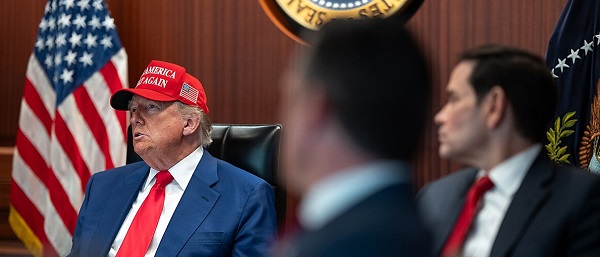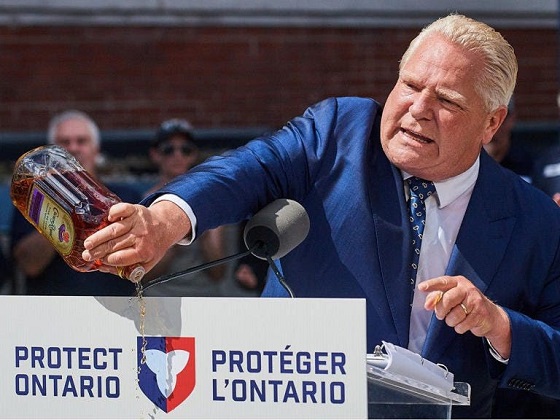Brownstone Institute
The Familiarity of Old Evils: The Zone of Interest Movie Review

From the Brownstone Institute
BY
Last Thursday the New York Times published a very strange review of the new Holocaust movie, The Zone of Interest. The review was written by Manohla Dargis, who is one of the finest film critics in the country. But something was off about this piece.
Ms. Dargis is withering right out of the gate calling the movie hollow, a self-aggrandizing art-film, and pointless. I thought to myself, ‘What’s going on here!? New York Times movie reviewers generally have high praise for Holocaust films!’ And the words “hollow” and “pointless” are very different from calling something a “self-aggrandizing art film” (the first two terms are about emptiness, the last is about being overwrought). My Spidey-sense started tingling — Ms. Dargis is triggered! But why?
The more I read the more curious I got. The film is set in the residential neighborhood on the other side of the wall from the Auschwitz Concentration and Extermination Camp during the years 1942 and 1943 — at the height of the industrialized mass murder carried out by the Nazis. But the film never directly shows what is happening inside the death camp. Instead, the film is about how the family of the camp commandant, Rudolf Höss, ignores the genocide that is happening all around them. It sounded like a fascinating premise, yet the review is just a long string of insults that ends with her calling the movie “vacuous.”
I wondered — was Ms. Dargis triggered because the movie is a perfect description of our current reality — an entire society dedicated to denying the genocide that is all around us?
So, I dropped my plans for the day and jumped in the car to see a matinee of The Zone of Interest at one of the two theaters in Los Angeles that is showing the film. It was the first time I had seen a film in a theater in four years. Here’s the trailer:
It turns out that the film is an absolute masterpiece — perhaps the most impactful Holocaust film I’ve ever seen. The film opens with a pastoral scene of a family enjoying a summer day along a river surrounded by lush green forests. But we soon discover that the National Socialists have turned this Eden into hell on earth.

The Zone of Interest is best understood as a horror film, however it never shows the violence directly. As the director explains in an interview it’s really two films — the visuals of the family going about their daily activities and the background audio that was created after the filming was completed.
The sound designer went to Auschwitz to record the natural sounds of the region and then interviewed survivors to identify all of the sounds that would have come from the machinery of death at the camp. So while you are watching the family on screen you are hearing the sounds of the death camp all around you. The sounds become omnipresent, oppressive, and terrifying but the family does everything they can to deny, normalize, and accept the genocide happening on the other side of the wall.
Many Holocaust films turn the Nazis into monsters — a cartoonish “other.” While indeed there were some monsters, Hannah Arendt teaches us that the genocide was run by the bureaucrats. Seeing the banality of evil depicted in this film — the camp commandant making sure his kids are ready for school and kissing his wife before going off to work — is far more scary because it points to the darkness that resides in the hearts of all people (even though it is not always expressed).
This is a theme I keep coming back to. As I’ve written before, I think it is a mistake to see the Nazis as singular in their atrocities. Yes, they had a particular zeal for their industrialized murderousness. But under the right conditions, lots of people are willing to participate in great evil.
Every day for the last four years New York has been the center of the American iatrogenocide:
New York City is the headquarters for Peter Daszak’s EcoHealth Alliance — the fake nonprofit that Tony Fauci used to send money to Wuhan to develop SARS-CoV-2 in violation of the US ban on gain-of-function research.
Upon hearing of Covid, the New York State Department of Health gave itself permission to set up quarantine camps to detain anyone for any reason without due process of law. Think about that — the first instinct of the public health authorities in the state with the largest Jewish population was, “How can we set up the legal framework for quarantine camps?”
New York hospitals implemented the murderous protocols of immediately ventilating patients, thus killing 80% to 90% of the people in their care rather than treating them with ivermectin or two dozen other off-the-shelf medicines that work.
New York implemented Vaccine Jim Crow that blocked the unvaccinated, including 75% of the city’s Black population, from eating indoors at restaurants.
And New York embraced the deadly Covid shots at a higher rate than the rest of the country and now they are dealing with the consequences — an increase in all-cause mortality and a rise in chronic health conditions.
So I think my hunch was correct — a movie about an entire society that ignored the genocide all around them hit a bit too close to home for Manohla Dargis and her bosses at the New York Times who have spent the last four years ignoring the genocide all around them. But for anyone trying to understand the murderous actions of the Covidians and their unwillingness to take responsibility for their crimes, this film is illuminating.
The Zone of Interest is currently playing in limited release in the U.. It will be released on February 2, 2024 in the UK and February 9 in Poland. I imagine it will arrive on streaming services in the US shortly after that. If you see it, I’m interested to hear your reactions. Please be forewarned though: the film will mess you up because it shows the worst side of humanity and reminds us that it is happening all over again.
Republished from the author’s Substack
Brownstone Institute
Bizarre Decisions about Nicotine Pouches Lead to the Wrong Products on Shelves

From the Brownstone Institute
A walk through a dozen convenience stores in Montgomery County, Pennsylvania, says a lot about how US nicotine policy actually works. Only about one in eight nicotine-pouch products for sale is legal. The rest are unauthorized—but they’re not all the same. Some are brightly branded, with uncertain ingredients, not approved by any Western regulator, and clearly aimed at impulse buyers. Others—like Sweden’s NOAT—are the opposite: muted, well-made, adult-oriented, and already approved for sale in Europe.
Yet in the United States, NOAT has been told to stop selling. In September 2025, the Food and Drug Administration (FDA) issued the company a warning letter for offering nicotine pouches without marketing authorization. That might make sense if the products were dangerous, but they appear to be among the safest on the market: mild flavors, low nicotine levels, and recyclable paper packaging. In Europe, regulators consider them acceptable. In America, they’re banned. The decision looks, at best, strange—and possibly arbitrary.
What the Market Shows
My October 2025 audit was straightforward. I visited twelve stores and recorded every distinct pouch product visible for sale at the counter. If the item matched one of the twenty ZYN products that the FDA authorized in January, it was counted as legal. Everything else was counted as illegal.
Two of the stores told me they had recently received FDA letters and had already removed most illegal stock. The other ten stores were still dominated by unauthorized products—more than 93 percent of what was on display. Across all twelve locations, about 12 percent of products were legal ZYN, and about 88 percent were not.
The illegal share wasn’t uniform. Many of the unauthorized products were clearly high-nicotine imports with flashy names like Loop, Velo, and Zimo. These products may be fine, but some are probably high in contaminants, and a few often with very high nicotine levels. Others were subdued, plainly meant for adult users. NOAT was a good example of that second group: simple packaging, oat-based filler, restrained flavoring, and branding that makes no effort to look “cool.” It’s the kind of product any regulator serious about harm reduction would welcome.
Enforcement Works
To the FDA’s credit, enforcement does make a difference. The two stores that received official letters quickly pulled their illegal stock. That mirrors the agency’s broader efforts this year: new import alerts to detain unauthorized tobacco products at the border (see also Import Alert 98-06), and hundreds of warning letters to retailers, importers, and distributors.
But effective enforcement can’t solve a supply problem. The list of legal nicotine-pouch products is still extremely short—only a narrow range of ZYN items. Adults who want more variety, or stores that want to meet that demand, inevitably turn to gray-market suppliers. The more limited the legal catalog, the more the illegal market thrives.
Why the NOAT Decision Appears Bizarre
The FDA’s own actions make the situation hard to explain. In January 2025, it authorized twenty ZYN products after finding that they contained far fewer harmful chemicals than cigarettes and could help adult smokers switch. That was progress. But nine months later, the FDA has approved nothing else—while sending a warning letter to NOAT, arguably the least youth-oriented pouch line in the world.
The outcome is bad for legal sellers and public health. ZYN is legal; a handful of clearly risky, high-nicotine imports continue to circulate; and a mild, adult-market brand that meets European safety and labeling rules is banned. Officially, NOAT’s problem is procedural—it lacks a marketing order. But in practical terms, the FDA is punishing the very design choices it claims to value: simplicity, low appeal to minors, and clean ingredients.
This approach also ignores the differences in actual risk. Studies consistently show that nicotine pouches have far fewer toxins than cigarettes and far less variability than many vapes. The biggest pouch concerns are uneven nicotine levels and occasional traces of tobacco-specific nitrosamines, depending on manufacturing quality. The serious contamination issues—heavy metals and inconsistent dosage—belong mostly to disposable vapes, particularly the flood of unregulated imports from China. Treating all “unauthorized” products as equally bad blurs those distinctions and undermines proportional enforcement.
A Better Balance: Enforce Upstream, Widen the Legal Path
My small Montgomery County survey suggests a simple formula for improvement.
First, keep enforcement targeted and focused on suppliers, not just clerks. Warning letters clearly change behavior at the store level, but the biggest impact will come from auditing distributors and importers, and stopping bad shipments before they reach retail shelves.
Second, make compliance easy. A single-page list of authorized nicotine-pouch products—currently the twenty approved ZYN items—should be posted in every store and attached to distributor invoices. Point-of-sale systems can block barcodes for anything not on the list, and retailers could affirm, once a year, that they stock only approved items.
Third, widen the legal lane. The FDA launched a pilot program in September 2025 to speed review of new pouch applications. That program should spell out exactly what evidence is needed—chemical data, toxicology, nicotine release rates, and behavioral studies—and make timely decisions. If products like NOAT meet those standards, they should be authorized quickly. Legal competition among adult-oriented brands will crowd out the sketchy imports far faster than enforcement alone.
The Bottom Line
Enforcement matters, and the data show it works—where it happens. But the legal market is too narrow to protect consumers or encourage innovation. The current regime leaves a few ZYN products as lonely legal islands in a sea of gray-market pouches that range from sensible to reckless.
The FDA’s treatment of NOAT stands out as a case study in inconsistency: a quiet, adult-focused brand approved in Europe yet effectively banned in the US, while flashier and riskier options continue to slip through. That’s not a public-health victory; it’s a missed opportunity.
If the goal is to help adult smokers move to lower-risk products while keeping youth use low, the path forward is clear: enforce smartly, make compliance easy, and give good products a fair shot. Right now, we’re doing the first part well—but failing at the second and third. It’s time to fix that.
Addictions
The War on Commonsense Nicotine Regulation

From the Brownstone Institute
Cigarettes kill nearly half a million Americans each year. Everyone knows it, including the Food and Drug Administration. Yet while the most lethal nicotine product remains on sale in every gas station, the FDA continues to block or delay far safer alternatives.
Nicotine pouches—small, smokeless packets tucked under the lip—deliver nicotine without burning tobacco. They eliminate the tar, carbon monoxide, and carcinogens that make cigarettes so deadly. The logic of harm reduction couldn’t be clearer: if smokers can get nicotine without smoke, millions of lives could be saved.
Sweden has already proven the point. Through widespread use of snus and nicotine pouches, the country has cut daily smoking to about 5 percent, the lowest rate in Europe. Lung-cancer deaths are less than half the continental average. This “Swedish Experience” shows that when adults are given safer options, they switch voluntarily—no prohibition required.
In the United States, however, the FDA’s tobacco division has turned this logic on its head. Since Congress gave it sweeping authority in 2009, the agency has demanded that every new product undergo a Premarket Tobacco Product Application, or PMTA, proving it is “appropriate for the protection of public health.” That sounds reasonable until you see how the process works.
Manufacturers must spend millions on speculative modeling about how their products might affect every segment of society—smokers, nonsmokers, youth, and future generations—before they can even reach the market. Unsurprisingly, almost all PMTAs have been denied or shelved. Reduced-risk products sit in limbo while Marlboros and Newports remain untouched.
Only this January did the agency relent slightly, authorizing 20 ZYN nicotine-pouch products made by Swedish Match, now owned by Philip Morris. The FDA admitted the obvious: “The data show that these specific products are appropriate for the protection of public health.” The toxic-chemical levels were far lower than in cigarettes, and adult smokers were more likely to switch than teens were to start.
The decision should have been a turning point. Instead, it exposed the double standard. Other pouch makers—especially smaller firms from Sweden and the US, such as NOAT—remain locked out of the legal market even when their products meet the same technical standards.
The FDA’s inaction has created a black market dominated by unregulated imports, many from China. According to my own research, roughly 85 percent of pouches now sold in convenience stores are technically illegal.
The agency claims that this heavy-handed approach protects kids. But youth pouch use in the US remains very low—about 1.5 percent of high-school students according to the latest National Youth Tobacco Survey—while nearly 30 million American adults still smoke. Denying safer products to millions of addicted adults because a tiny fraction of teens might experiment is the opposite of public-health logic.
There’s a better path. The FDA should base its decisions on science, not fear. If a product dramatically reduces exposure to harmful chemicals, meets strict packaging and marketing standards, and enforces Tobacco 21 age verification, it should be allowed on the market. Population-level effects can be monitored afterward through real-world data on switching and youth use. That’s how drug and vaccine regulation already works.
Sweden’s evidence shows the results of a pragmatic approach: a near-smoke-free society achieved through consumer choice, not coercion. The FDA’s own approval of ZYN proves that such products can meet its legal standard for protecting public health. The next step is consistency—apply the same rules to everyone.
Combustion, not nicotine, is the killer. Until the FDA acts on that simple truth, it will keep protecting the cigarette industry it was supposed to regulate.
-

 Business1 day ago
Business1 day agoTrump’s Tariffs Have Not Caused Economy To Collapse
-

 Daily Caller1 day ago
Daily Caller1 day agoTrump Reportedly Planning Ground Troops, Drone Strikes On Cartels In Mexico
-

 Daily Caller2 days ago
Daily Caller2 days agoNigeria Would Welcome US Intervention In Massacre Of Christians By Islamic Terror Groups
-

 Alberta20 hours ago
Alberta20 hours agoAlberta government’s plan will improve access to MRIs and CT scans
-

 Alberta2 days ago
Alberta2 days agoCanada’s heavy oil finds new fans as global demand rises
-

 Business2 days ago
Business2 days agoCarney government should retire misleading ‘G7’ talking point on economic growth
-

 Automotive2 days ago
Automotive2 days agoCanada’s EV experiment has FAILED
-

 Bruce Dowbiggin2 days ago
Bruce Dowbiggin2 days agoA Story So Good Not Even The Elbows Up Crew Could Ruin It















